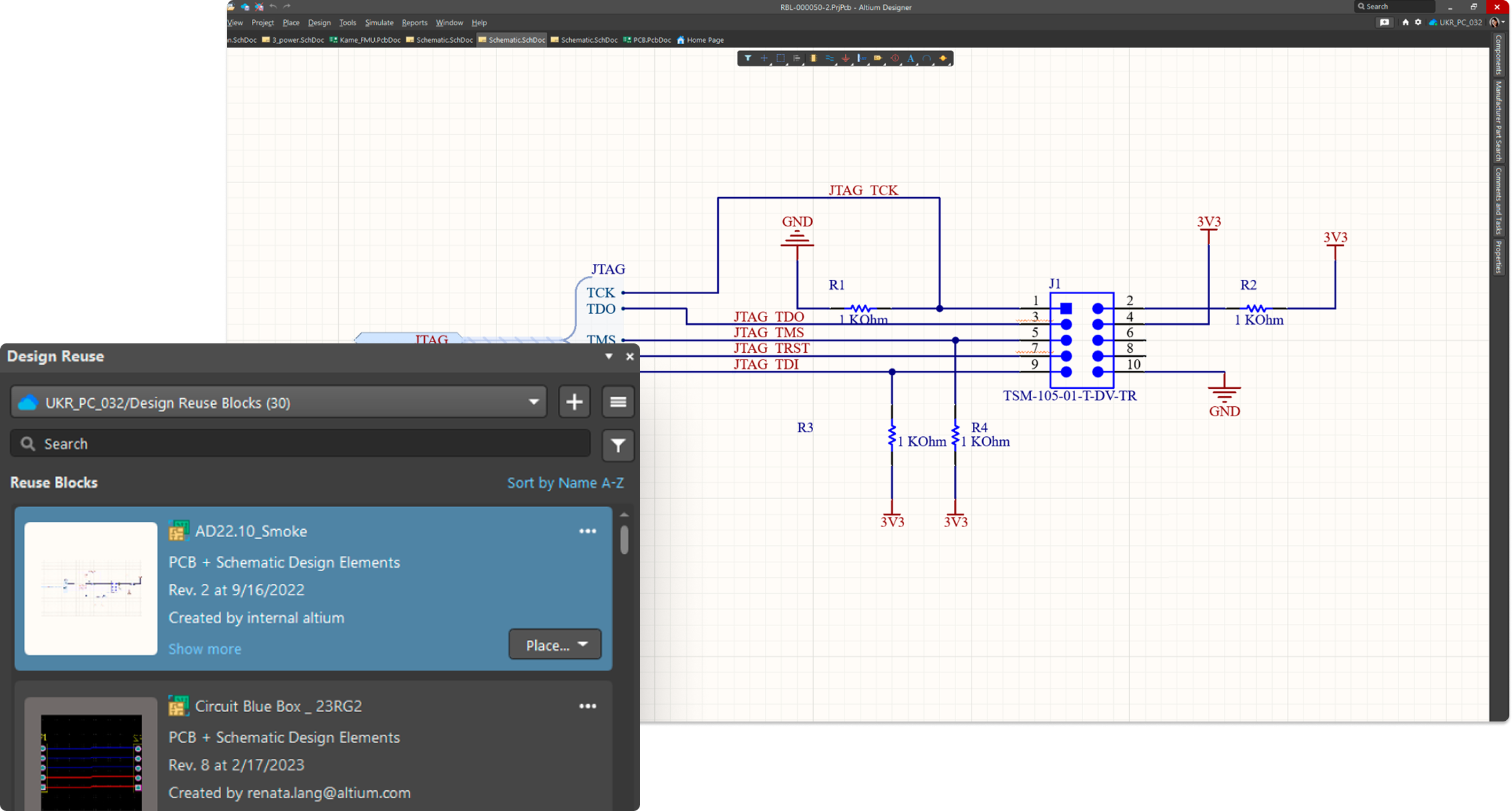Datenmanagement und Versionskontrollsysteme
Speichern Sie alle Bibliotheken und Entwurfsdaten an einem sicheren und zugänglichen Ort mit einem für die Hardwareentwicklung konzipierten Versionskontrollsystem.
Ein sicherer
Arbeitsbereich mit
granularer Zugangskontrolle
Ein sicherer
Arbeitsbereich mit
granularer Zugangskontrolle
All Ihre Hardware-Designdaten, Komponentenbibliotheken und Fertigungspakete befinden sich an einem einzigen, sicheren Ort, auf den von jedem Gerät mit einem Browser aus zugegriffen werden kann. Sie haben die volle Kontrolle darüber, wer Designdateien anzeigen, bearbeiten, herunterladen und weitergeben kann.
Git-Versions-
kontrolle für die Hardware-Entwicklung
Git-Versions-
kontrolle für die Hardware-Entwicklung
Das Versionskontrollsystem von Altium 365 ist für Hardware-Entwicklungsteams optimiert. Sie müssen keine Repositories verwalten oder ein Text-Diff entziffern, um zu verstehen, was sich in Ihren Projekten geändert hat.
Vollständige Rückverfolgbarkeit
und Transparenz
Vollständige Rückverfolgbarkeit
und Transparenz
Erfahren Sie, wer wann und warum Änderungen am Projekt vorgenommen hat. Identifizieren Sie die Änderungen schnell mit einem visuellen Diff, das für Hardware entwickelt wurde, und kehren Sie bei Bedarf zu einer früheren Version zurück.
Wichtigste Ressourcen

Visueller Vergleich
Vergleichen Sie Ihre Schaltplan-, PCB-, Gerber- oder Stücklisten-Dateien mit Leichtigkeit. Das leistungsstarke visuelle Diff hebt Änderungen schnell hervor und ermöglicht Ihnen so, vorhandene Commits und Releases oder Ihre lokalen, noch nicht committeten Dateien mit zuvor committeten Designversionen zu vergleichen.

Reuse Proven Circuit Design Blocks
Reuse once-validated circuits that include both logical and physical elements. Easily add them to new projects without digging through old designs to extract the same circuitry. The entire team becomes familiar with recurring design blocks, streamlining collaboration.
Genießt das Vertrauen von Weltklasse-
marken und Startups gleichermaßen
„Mit Altium 365 bleibt die gesamte Kommunikation innerhalb des Projekts und bietet Ihnen so mehr Transparenz, Rückverfolgbarkeit und Zurechenbarkeit für sämtliche Daten.“
„Bei Altium 365 hat man nicht das Gefühl, mit der Cloud verbunden zu sein. Sie arbeiten weiterhin in einer Desktop-Umgebung mit Altium Designer, so dass der Arbeitsablauf nicht unterbrochen wird und es nichts Neues zu lernen gibt. Es ist einfach alles da, was Sie brauchen, und es funktioniert.“
„Unsere Elektroingenieure und ich nutzen Altium 365 jeden Tag von zu Hause aus, um alles zu erledigen – vom Austausch von Entwürfen bis hin zur Einhaltung der strengen Revisions- und Prozesskontrollen, die unsere größeren Kunden aus der Luft- und Raumfahrt heutzutage erwarten.“
„Altium 365 hat uns mehr Möglichkeiten gegeben, brillante Arbeit zu leisten – egal, von wo aus unser Team arbeitet.“

Contact Us
to Learn More About
Altium Agile
Platform-based solution for electronics product
and systems, delivering control without complexity
Complete this form and our sales team will reach out to answer your questions about Altium Agile Teams or Altium Agile Enterprise.









